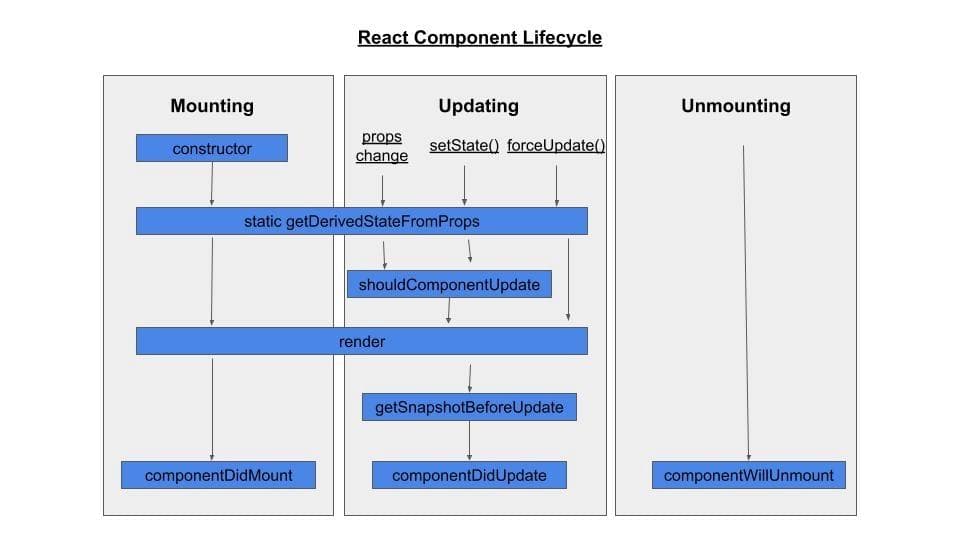1. Introduction to React
React is a JavaScript library for building user interfaces.
Key Features of React:
- Component-Based: React follows a component-based architecture where UI is divided into reusable components.
- Virtual DOM: React uses a virtual DOM for better performance by updating only the necessary parts of the actual DOM.
- JSX: React allows writing UI components using JSX, which is a syntax extension for JavaScript.
React is widely used in web development to create interactive and dynamic user interfaces.

2. React Components
React Components are the building blocks of a React application.
Types of React Components:
- Functional Components: These are simple JavaScript functions that accept props and return React elements.
- Class Components: These are ES6 classes that extend from React.Component and have their own state.

3. State and Props in React
This section covers the concept of State and Props in React.
State
State allows components to manage and operate with dynamic data.
- Stateful components can hold and modify their own state data.
- State changes trigger re-rendering of the component.
Props
Props are read-only properties passed from parent to child components.
- Props help in passing data and event handlers down the component tree.
- Props are immutable, meaning they cannot be modified within the component.

4. Managing State in React
In React, state is used to store and manage data that can change over time.
Using State in React Components
To manage state in a React component, you can use the useState hook.
Updating State
To update state in React, use the setState function provided by the useState hook.
Initializing State
You can initialize state in a React component by providing an initial value to the useState hook.

5. React Hooks and Lifecycle Methods
In React, there are two key concepts for managing component life cycles: React Hooks and Lifecycle Methods.
React Hooks
React Hooks are functions that let you use state and other React features in functional components. Some commonly used hooks include useState and useEffect.
Lifecycle Methods
Lifecycle Methods are methods that are called at different stages in a component’s life cycle. These methods include componentDidMount, componentDidUpdate, and componentWillUnmount.
